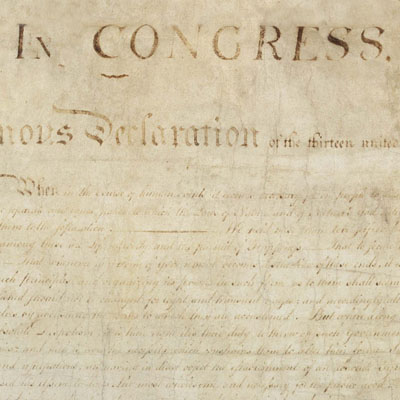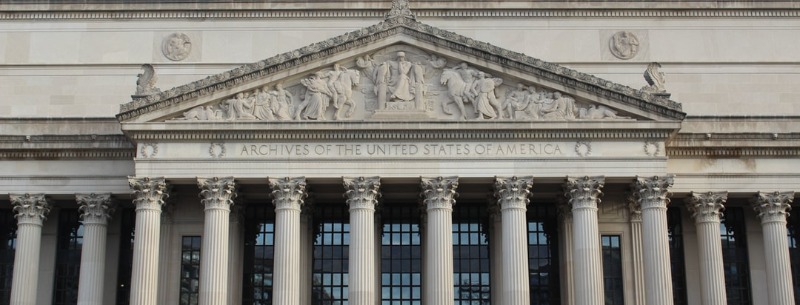The National Archives had long been on my list of places to go, and finally, a few weeks ago, I made it there. The Archives maintains documents and materials created in the business affairs of the Federal government that are deemed legally or historically important. The documents are preserved, and available to the public.
While the Archives maintain military records, the Presidential Libraries, and a variety of other records, what has always interested me are the chartering documents of our country. I wanted to see the Magna Carta, the Declaration of Independence, and the Constitution.
The Declaration of Independence and the Constitution are now housed in a newly refurbished Rotunda and are carefully preserved and displayed in glass cabinets. The original murals depicting the Founding Fathers and signers have also been restored, and are hung looking down upon the charter documents. The exhibit is aptly named: “Charters of Freedom, a New World is at Hand.”

The Declaration of Independence, drafted by Thomas Jefferson in 1776, summarized the ideals of individual liberty in “self-evident truths,” as it set forth a list of grievances against the Kind to justify the colonies breaking away from England.
We hold these truths to be self-evident, that all men are created equal, that they are endowed by their Creator with certain unalienable Rights, that among these are Life, Liberty and the pursuit of Happiness . . ..
After realizing that attempts to revise the Articles of Confederation would be futile, the Founding Fathers decided to draft a document that would frame an entirely new form of government. In closed sessions, the delegates debated, drafted, and redrafted what would become our Constitution. Many believe that the Constitution is the penultimate model of cooperative statesmanship and the art of compromise.
We the People of the United States, in Order to form a more perfect Union, establish Justice, insure domestic Tranquility, provide for the common defence, promote the general Welfare, and secure the Blessings of Liberty to ourselves and our Posterity, do ordain and establish this Constitution for the United States of America.
As the debates on the adoption of the Constitution raged on, opponents repeatedly worried and charged that the document, as drafted, would lead to tyranny by the Federal Government. They demanded a “bill of rights” that would spell out the immunities of private citizens and individual protection against the power of the Federal government. The first ten of these amendments became known as the Bill of Rights.
You can see these documents chartering our government, as well as other historical records at the National Archives.
The Archives are open during the summer (Memorial Day through Labor Day), daily from 10 am-9 pm. After Labor Day through March 31st, daily from 10 am-5 pm (closed Christmas Day), and April 1st through the Friday before Memorial Day Weekend, daily from 10 am-7 pm.
Admission is free.
Depending on the crowds, which are heaviest during March, April, and May, you should allow at least an hour to see the exhibits. If you’re a history buff or wish to enjoy the multi-media exhibits, allow additional time.
